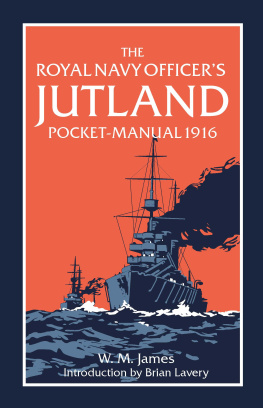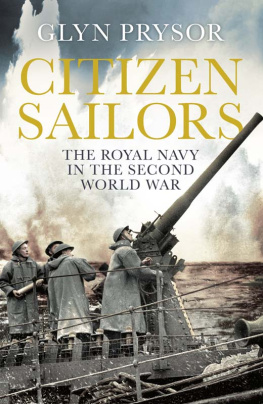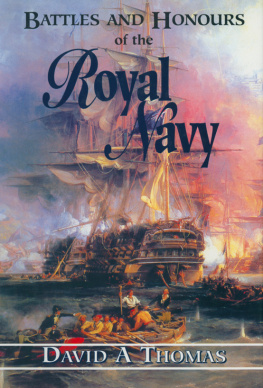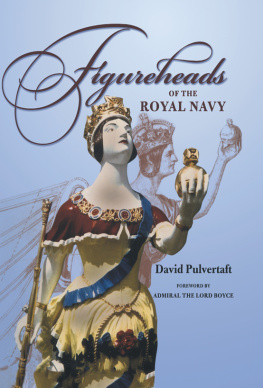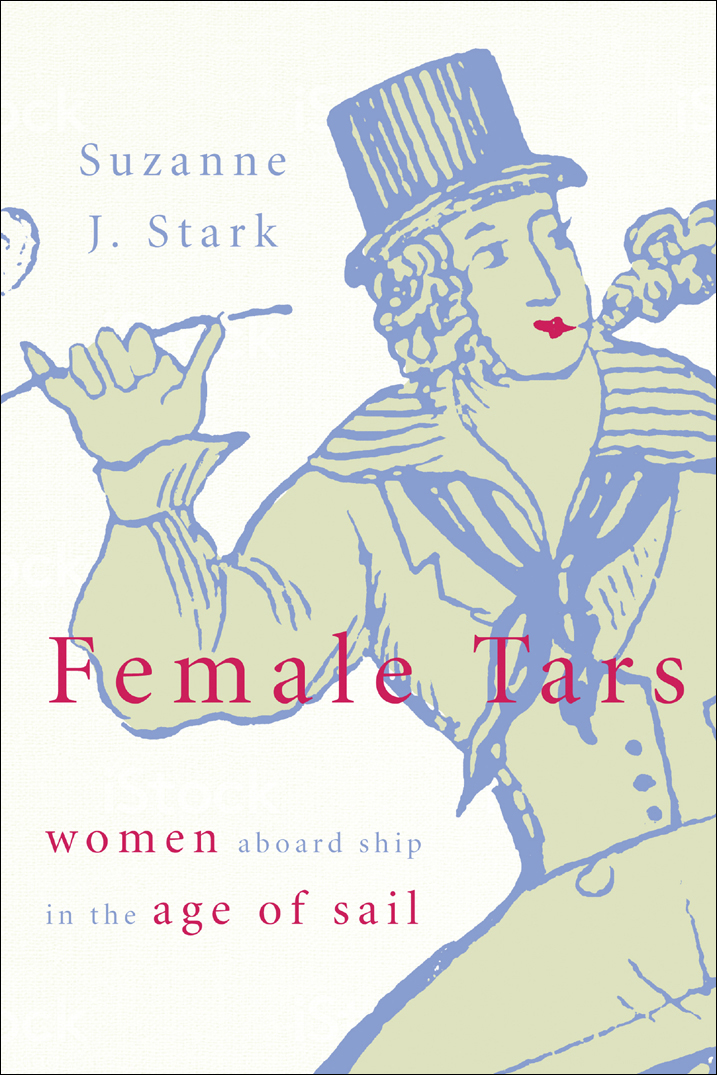

Naval Institute Press
291 Wood Road
Annapolis, MD 21402
1996 by Suzanne J. Stark
All rights reserved. No part of this book may be reproduced or utilized in any form or by any means, electronic or mechanical, including photocopying and recording, or by any information storage and retrieval system, without permission in writing from the publisher.
First Naval Institute Press paperback edition published in 2017.
ISBN: 978-1-68247-269-9 (eBook)
The Library of Congress has cataloged the hardcover edition as follows:
Stark, Suzanne J., 1926
Female tars: women aboard ship in the age of sail / Suzanne J. Stark.
p. cm.
Includes bibliographical references (p.) and index.
1. Great Britain. Royal NavyWomenHistory18th century.
2. Great Britain. Royal NavyWomenHistory19th century. I. Title.
VB325. G7S73 1996
359. 0082dc20

 Print editions meet the requirements of ANSI/NISO z39.48-1992 (Permanence of Paper).
Print editions meet the requirements of ANSI/NISO z39.48-1992 (Permanence of Paper).
25 24 23 22 21 20 19 18 17 9 8 7 6 5 4 3 2 1
First printing
First two verses from A Man of War Song No 56, A Sailors Songbag: An American Rebel in an English Prison, 17771779, ed. George G. Carey (Amherst: University of Massachusetts Press, 1976), 147. Reprinted by permission of the publisher.
Two verses from The Maiden Sailor, by John Curtin, The Pepys Ballads, ed., Hyder Edward Rollins, 8 vols. (Cambridge: Harvard University Press, 1932), 6: 17677. Reprinted by permission of the publisher.
Illustration on title page: Detail of a line engraving by C. Mosley. From Charles N. Robinson, The British Tar in Fact and Fiction (New York and London: Harper and Brothers, 1909). Boston Athenaeum.
CONTENTS
Table of Contents
Guide
I WOULD LIKE TO ACKNOWLEDGE the generosity of my daughter Francesca Macdonald Stark, whose incisive suggestions helped me to clarify my evolving theses throughout many years of research.
I am indebted to my friends Jeanne Steig, Leslie Larkin, and Kenneth Kronenberg, who read a series of revisions and offered wise counsel. Three English friendsJohn Braun, Claire Ritchie, and Bridget Spierstook time from their own projects to fill gaps in my research in British archives.
I also am beholden to James Feeney and the other staff members of the Boston Athenaeum, where a great part of my research was done, for tracking down many obscure sources.
Mary V. Yates, my editor, worked miracles in organizing my convoluted syntax and saved me many embarrassing errors.
The extensive quotations from the autobiography of Mary Lacy in chapter 4 are reproduced courtesy of the Trustees of the Boston Public Library. I copied these passages from the very rare volume The History of the Female Shipwright (London: M. Lewis, 1773) in their Rare Book Room. My transcribing was done some years ago with a pencil (pens are not allowed in the room, and rightly so). It took many long days, but I enjoyed the process. Since the book is now on microfilm, the actual volume is no longer available for study. This preserves the original and brings the material to a wider audience, but I am glad I got to use the real thing.

For quarter, for quarter, the Spanish lads did cry,
No quarter, no quarter, this damsel did reply;
Youve had the best of quarter that I can well afford,
You must fight, sink, or swim, my boys, or jump overboard.
So now the battles over, well drink a can of wine,
And you will drink to your love, and I will drink to mine;
Good health unto the damsel who fought upon the main,
And heres to the royal ship, the Rainbow by name.
As We Were A-Sailing
THE BRITISH ROYAL NAVY in the Age of Sailruler of the waves and protector of the worlds largest empirehas always been accounted a strictly male preserve, Britains strongest bastion of male exclusivity. The belief was ancient and ubiquitous that women had no place at sea. They not only were weak, hysterical, and feckless and distracted the men from their duties, but they also brought bad luck to the ships they traveled in; they called forth supernatural winds that sank the vessels and drowned the men.
Despite this superstitious prohibition, there were women living and working in naval ships from the late seventeenth century to the middle of the nineteenth, although their presence on board was officially ignored and even hidden.
It was not until 1993 that Great Britain, following the lead of other countries including the United States, integrated women into the regular navy as full-fledged sailors. Officially, women were first brought into the Royal Navy in 1917, but only as an auxiliary force: the Womens Royal Naval Service. The Wrens were recruited to release men from shore duty; in fact, their peculiar motto was Never at Sea. In 1919, at the close of World War I, the Wrens were disbanded, but in 1938 they were reinstituted and proved their prowess and courage from World War II up to 1993. Although in 1990 some Wrens were assigned to sea duty, they continued to be, as they had always been, denied many of the responsibilities, opportunities, and benefits offered by the regular service. To cite one odd example, Wren officers uniforms were without the gold braid used on the uniforms of the regular naval officers. Gold was deemed too expensive for use by a womens auxiliary.
The idea of women serving in the navy has always been resisted. A Times (London) article of 2 November 1993, issued on the day the Wrens were incorporated into the regular navy, noted, The Wrens have always suffered from a public image problem. For nearly 80 yearsas far as the public was concerned, the girls in navy blue were either frustrated lesbians or uniformed nymphomaniacs attempting to splice not only the mainbrace but also every petty officer aboard. Few of the people who today are opposed to women serving in naval ships are aware of the three-hundred-year-old tradition of women living on board. The sea service of women of earlier centuries was, of course, very different from that of the women in the twentieth-century navy. Women on board naval ships in the Age of Sail played a variety of widely divergent roles that divide into three main categories, discussed in the first three chapters of this book.
The largest category was composed of the hundreds of prostitutes who shared the quarters of the crew on the lower deck whenever a ship was in port. To understand why the navy unofficially condoned this practice, and to discover what led the prostitutes to this appalling fate, requires not only knowledge of naval history but awareness of the situation of women in the society as a whole.
Second, there were the wives of warrant officers, many of whom spent years at sea; the ship was often their only home. These women were active participants in battle, nursing the wounded and carrying powder to the guns. They too were ignored by the Admiralty; their names were not entered on the ships books, and they received no pay and no food rations. (Wives, daughters, and guests of captains and admirals also traveled in naval ships, but their reasons for going to sea were different, and so were their experiences on board. Their role is not discussed in this book.)




